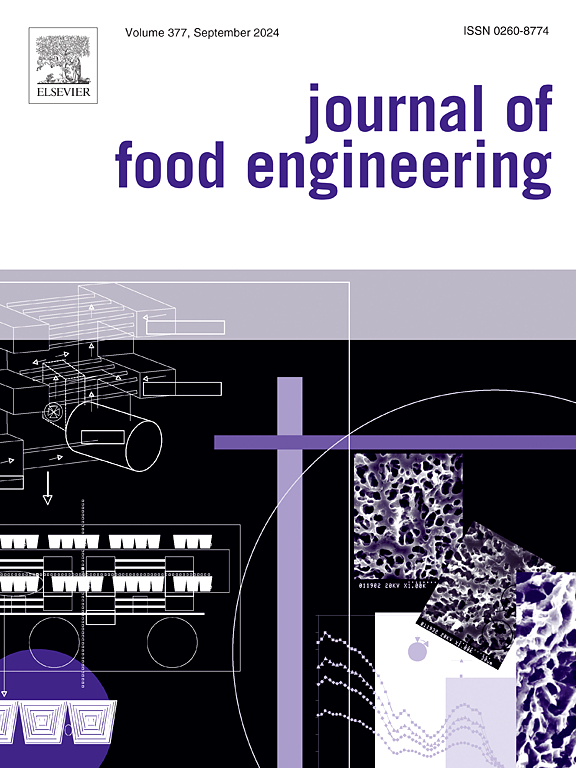淀粉形态对辣椒红稳定性和颜色的影响
IF 5.3
2区 农林科学
Q1 ENGINEERING, CHEMICAL
引用次数: 0
摘要
研究了不同来源淀粉颗粒对辣椒红颜料稳定性和颜色的影响。结果表明,色素的颜色和稳定性不受淀粉组成(水分和直链淀粉含量)的影响,但强烈依赖于淀粉的形态。马铃薯淀粉的颜色比玉米淀粉更红,颜色更深,ΔE值为8.41,这是由于马铃薯淀粉的直径(29.94±0.08 μm)较大,漫反射较低,有利于色素分子形成j型聚集体。此外,淀粉的多孔结构被认为是决定光照射或热处理过程中色素稳定性的关键因素。多孔玉米淀粉对辣椒红具有良好的保护作用,在15000 lx, 10 d的贮藏过程中,其色素保留率高达87.23%。半球形改性木薯淀粉对色素的保护作用中等(84.35%),而表面光滑的马铃薯淀粉对色素的降解速度较快,在相同的储存条件下,色素降解率仅为80.44%。红外光谱分析表明,辣椒红分子主要通过氢键与淀粉相互作用。本文章由计算机程序翻译,如有差异,请以英文原文为准。

Impact of starch morphology on the stability and color of paprika red
The impact of starch granules from different sources on the stability and color of paprika red pigments was investigated. The results indicated that pigment color and stability were not affected by starch composition (moisture and amylose content) but were strongly dependent on starch morphology. The color on potato starch was much redder and darker with a ΔE value of 8.41 compared to maize starch, which was attributed to its large diameter (29.94 ± 0.08 μm), leading to low diffuse reflectance and facilitating the formation of J-type aggregates of pigment molecules. In addition, the porous structure of starch was recognized as a critical factor in determining the pigment stability during light irradiation or thermal treatment. The porous maize starch provided good protection for paprika red, showing higher pigment retention (87.23%) during storage (15000 lx, 10 days). The hemispherical modified cassava starch provided moderate protection (84.35%), while the potato starch with smooth surface resulted in a rapid pigment degradation, with only 80.44% remaining under the same storage conditions. FTIR spectra indicated that the paprika red molecules interacted with the starch mainly by hydrogen bonding.
求助全文
通过发布文献求助,成功后即可免费获取论文全文。
去求助
来源期刊

Journal of Food Engineering
工程技术-工程:化工
CiteScore
11.80
自引率
5.50%
发文量
275
审稿时长
24 days
期刊介绍:
The journal publishes original research and review papers on any subject at the interface between food and engineering, particularly those of relevance to industry, including:
Engineering properties of foods, food physics and physical chemistry; processing, measurement, control, packaging, storage and distribution; engineering aspects of the design and production of novel foods and of food service and catering; design and operation of food processes, plant and equipment; economics of food engineering, including the economics of alternative processes.
Accounts of food engineering achievements are of particular value.
 求助内容:
求助内容: 应助结果提醒方式:
应助结果提醒方式:


